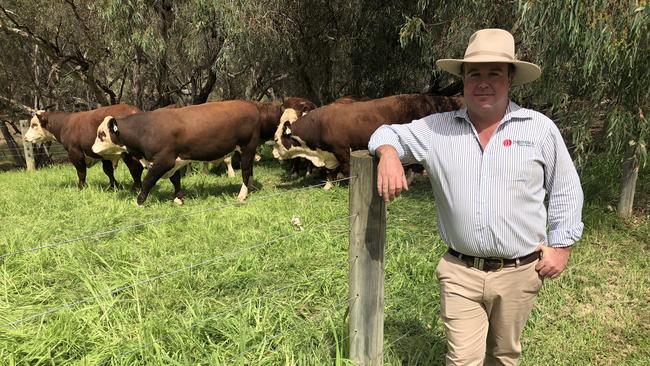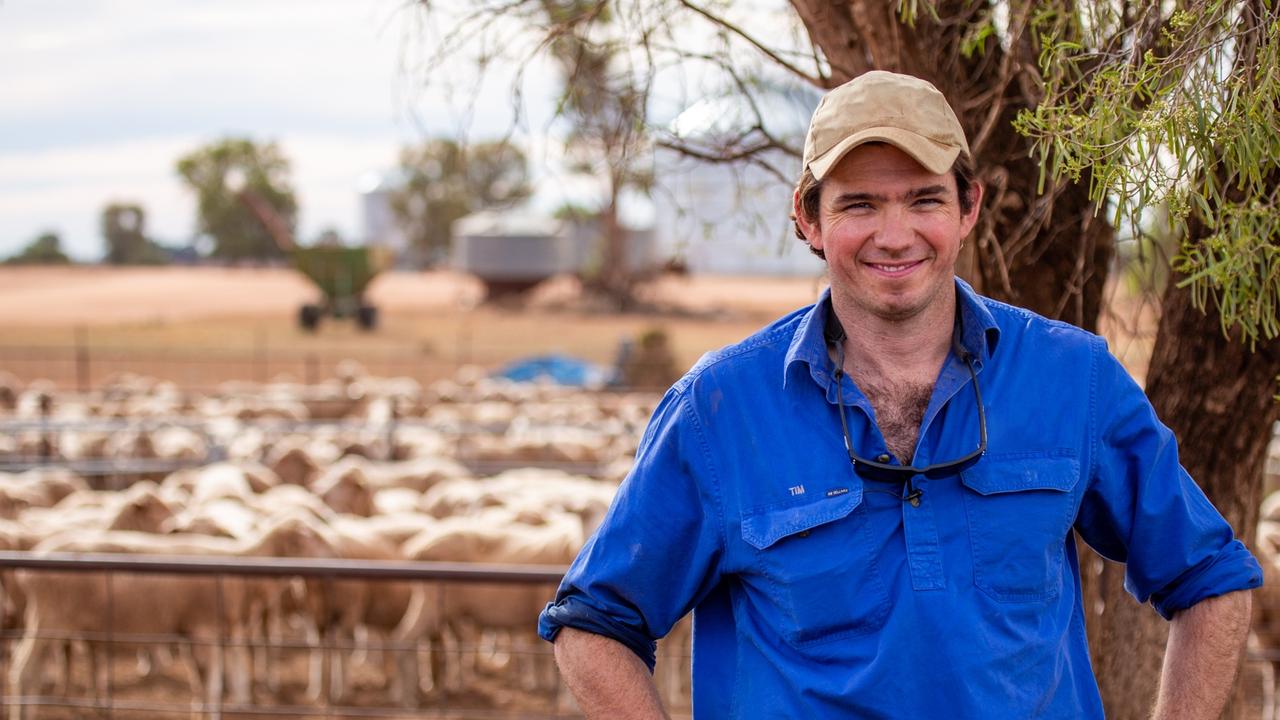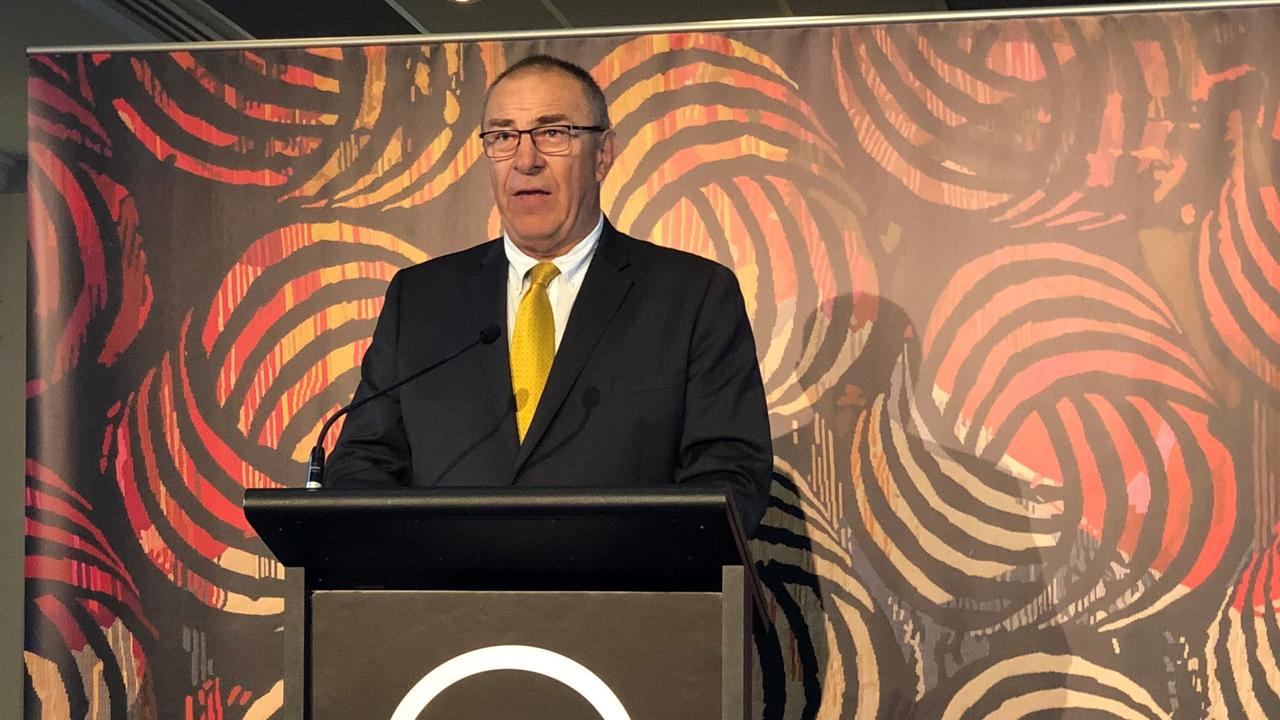Leading bull breeder Marc Greening poised to meet industry needs
Expecting a lift in demand for easy-calving genetics, leading Poll Hereford breeder Marc Greening has prepared to meet that by focusing on heifer-ready bulls.

LEADING Poll Hereford breeder Marc Greening, of Injemira, will have 100 bulls ready later this month to meet the demand of this year’s beef industry.
The Holbrook, NSW, seedstock and commercial producer has honed his operation for the season with a focus on heifer-ready bulls to meet what he expects to be a lift in demand for easy-calving genetics.
Injemira is a vertically integrated business offering bulls and females for sale, as well as purchasing weaner calves from regular clients to finish on grass.
Mr Greening said that system delivered immediate, commercially relevant information that guided his breeding selections.
When it comes to returns, Mr Greening described the past 12 months as “unbelievable”, but said it added a complication for his enterprise.
“The margin on trade cattle is unlike anything I’ve ever seen before for grass-fed markets,” he said. “Although that does bring in the conundrum of restocking – the cost of buying in this market.”
Mr Greening usually purchases about 2000 trade cattle each year, drawing from bull-clients’ herds, aiming to target the domestic grass-fed market.
The 18- to 20-month-old cattle are turned off at 290kg carcass weights, measuring eight to 10mm of fat.
“I’ve backed off on the numbers this year and diversified (away from buying all weaner calves) to looking at buying pregnant females, which, when you crunch the numbers it looks worthwhile.”
Although he didn’t end up purchasing as many clients’ steers out of the weaner sales this season, he said he was often the underbidder, and clients recognised that he was supporting their program.
“Injemira being there put a floor in the market for their calves,” he said. “And I don’t see the market slipping anytime soon.”
The Injemira bull sale is on February 23 and 100 Poll Hereford bulls will be offered.
Mr Greening was upbeat about the outlook for bull demand, but said the high prices for cull cows may have reduced some cow numbers.
“It is certainly a different experience talking to clients this year in the lead up to the bull sale, compared to the lead up a few years ago,” he said.
“Everyone has a smile on their face and a skip in their step.”
This sale he has focused on making as many heifer-suited bulls available as possible. With the national shortage of breeders, Mr Greening expects more heifers to be mated this year.
His catalogue includes 53 bulls identified as heifer-suited as they meet his strict heifer breeding criteria.
Injemira has also responded to longer-term changes in the beef industry – rising production costs and greater expectations from processors and consumers for premium, ethically produced meat.
“It used to be that weight and growth pay; that was the top criteria,” he said. “But the commercial reality now is that weight still pays but the carcass has to be suitable and meet the premium grass-fed market specifications.
“Cattle that we are producing now have to finish at a younger age – gone are the days of the three-year-old bullock.”
Mr Greening said the cost of production had risen so producers were looking for more “stock turns and animals that are going to hit those specifications and finish well”.
“We are aiming for 1.6 stock turns per animal on the same area of land per year; with a three-year-old bullock that figure would be more like 0.8 turns,” he said.
For seedstock producers, this meant cattle needed carcass and shape, with growth that was not at the “extreme end of the scale”, from moderate, functional cows.
Judging finish was a bit of an art combining both visual appraisal and breeding vales for fats, he said. “But you really can tell by the visual appearance of a lot of bulls if they have that softness,” he said.
Mr Greening also analyses the Meat Standards Australia grading data on processed stock, helping him form a picture of the herd’s progress.
It also helped him select bulls to best match clients’ herds.
Mr Greening said grass-fed beef was increasingly popular with consumers, and overtaking organic as a preference. This was thanks to the often higher quality beef that could be produced from southern, British breed herds in grass-fed systems, he said, whereas much of the organic beef was Bos Indicus types in Northern Australia, which struggled to produce premium MSA-graded beef.
MORE


